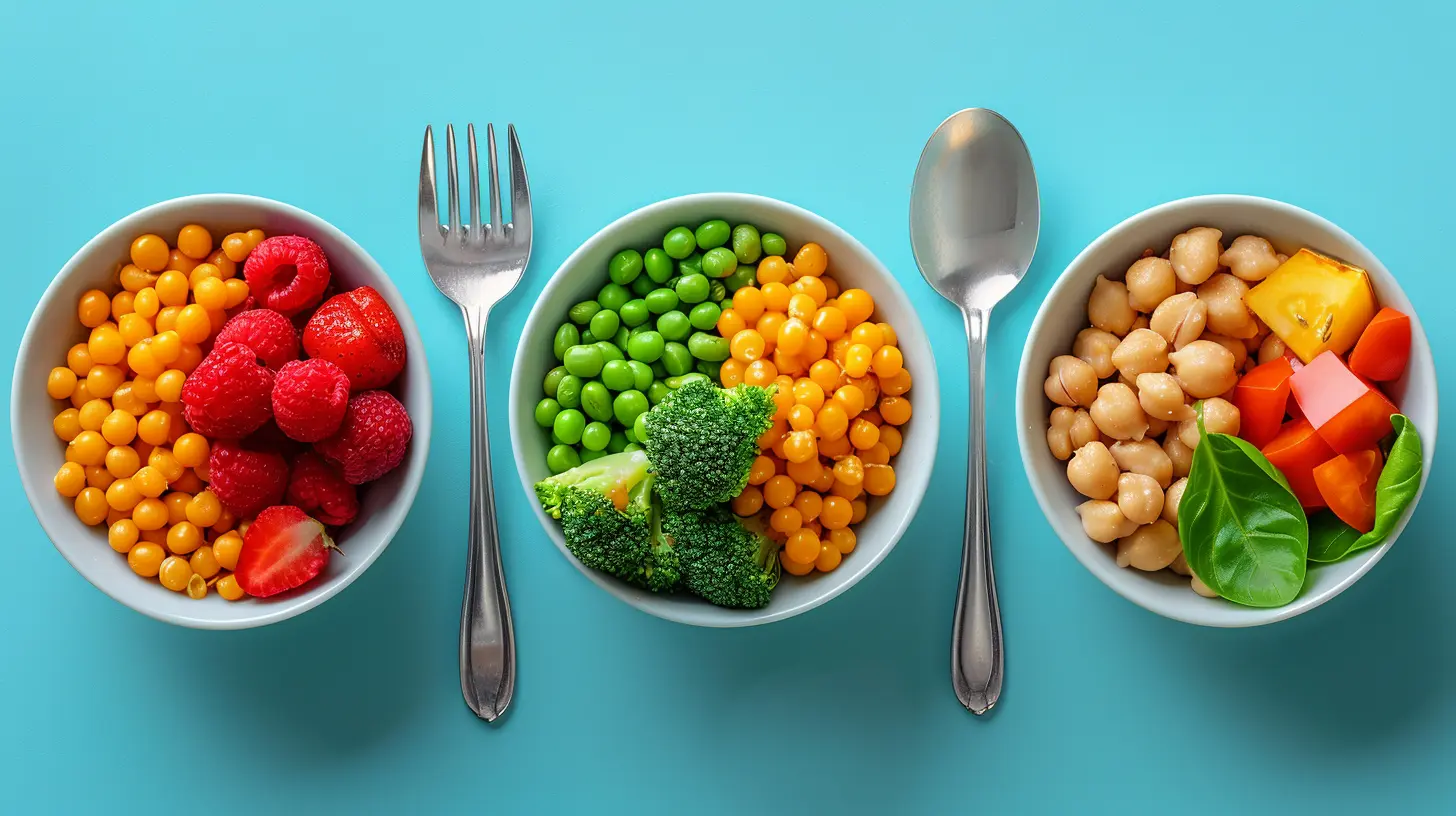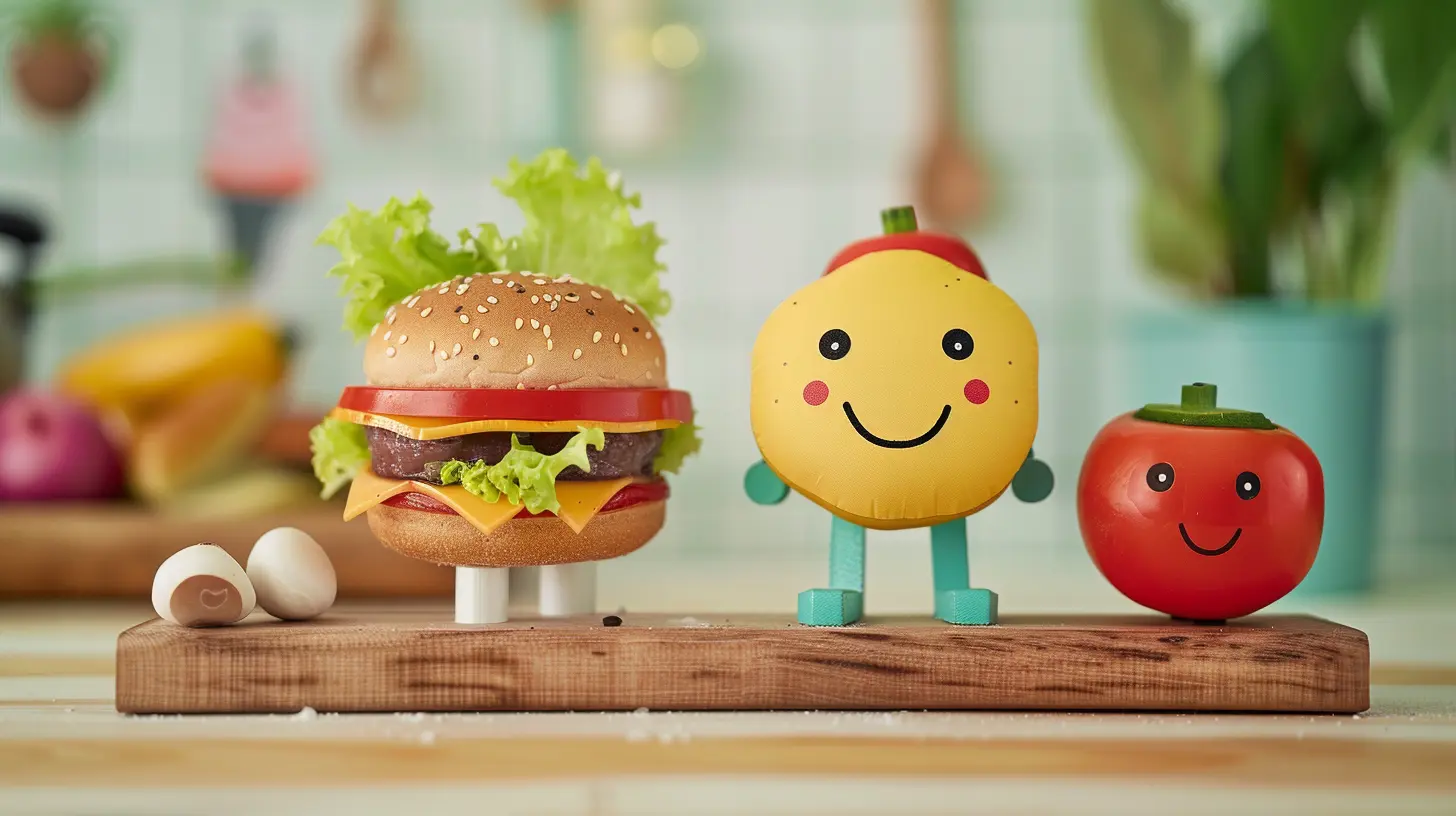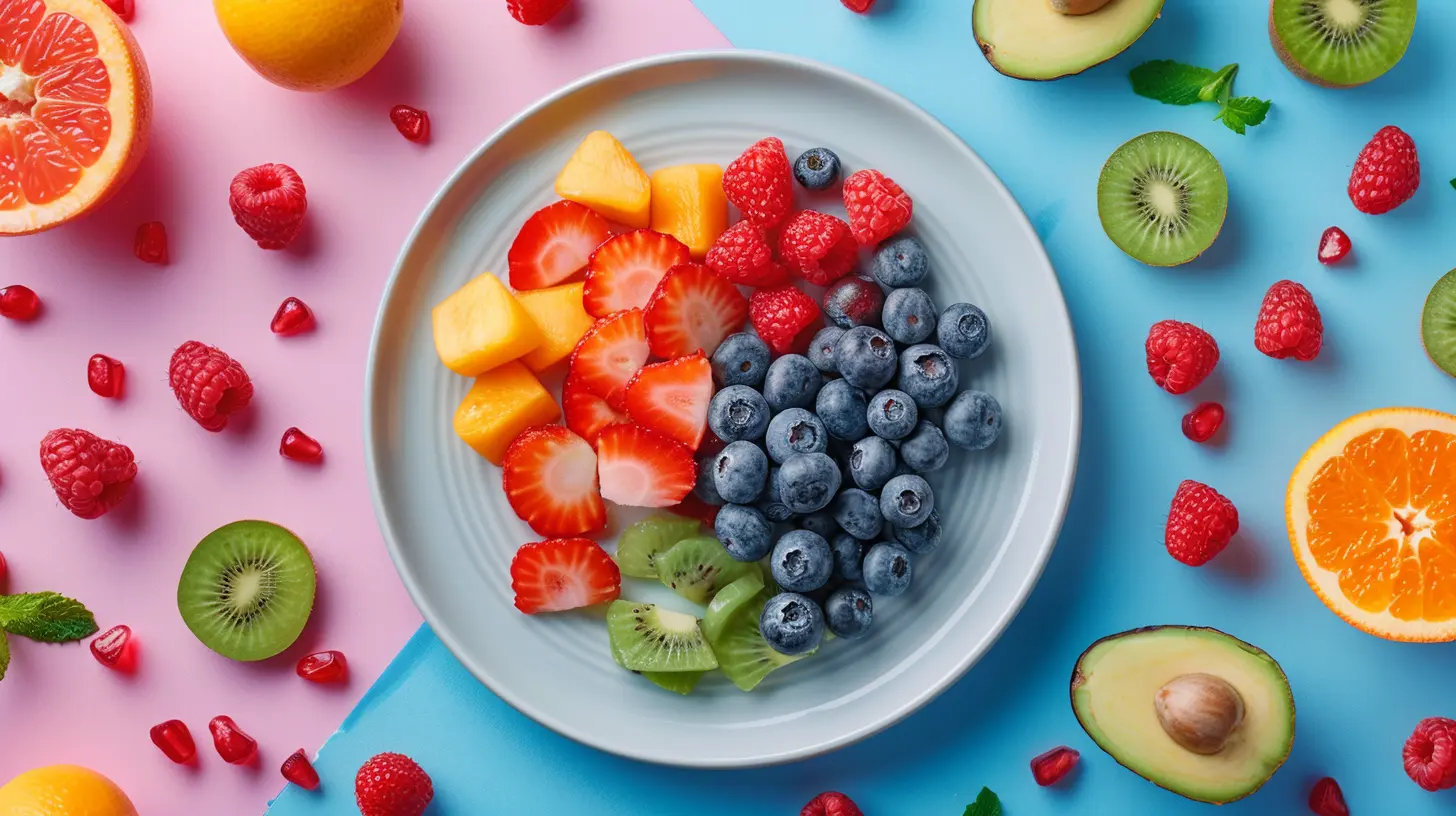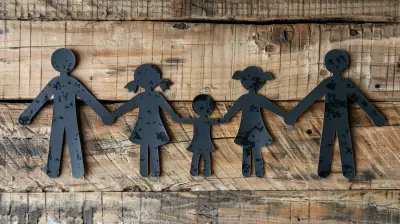Understanding Portion Sizes for Kids
28 November 2024
As parents, one of our primary concerns is ensuring that our children are eating just the right amount of food. But the big question is: how much is enough? In today's world of supersized meals and endless snacks, it's easy to either overfeed or underfeed our little ones. Understanding portion sizes for kids isn't just about making sure they finish their veggies; it's about promoting lifelong healthy eating habits.
In this article, we'll break down what portion sizes should look like for children, how they differ from adult portions, and practical tips to ensure your child gets the nutrients they need – without going overboard.

Why Portion Sizes Matter
It’s tempting to fill up your kid’s plate, especially when they’re picky eaters. You might think, "The more food I put in front of them, the more they'll eat." But that’s not always the case. In fact, huge portion sizes can overwhelm kids or, worse, encourage overeating.The Overeating Dilemma
When children are regularly served oversized portions, they can lose touch with recognizing when they’re actually full. Their bodies and brains might ignore those subtle hunger and satiety cues, which can lead to overeating, weight gain, and an unhealthy relationship with food later in life.Encouraging Healthy Eating Habits
Proper portion sizes help kids learn to self-regulate — to eat when they’re hungry and stop when they’re full. Plus, sticking to appropriate portions can help reduce food waste and make mealtime less stressful. After all, no one likes an untouched plate of food staring back at them, right?
How Much Should Kids Eat?
Most parents wonder if their child is eating enough (or too much). The truth is, there’s no one-size-fits-all answer. Portion sizes for kids vary based on their age, activity level, growth spurts, and individual needs.However, there are general guidelines that can help you get started. Here's a breakdown of portion sizes based on age.
Babies and Toddlers (Ages 1-2)
At this stage, little ones are just starting to explore the world of solid foods. Their tummies are still tiny, so they don’t need large portions.- Protein: 1 to 2 tablespoons of mashed beans, meat, or fish.
- Vegetables: 1 to 2 tablespoons of cooked veggies.
- Fruits: 1 to 2 tablespoons of soft fruits.
- Grains: About 1/4 of a slice of bread or 1 tablespoon of rice or pasta.
It's often surprising to realize how small these portions are, right? But remember, toddlers are great at listening to their bodies. They're natural intuitive eaters — they'll stop when they're full (even if it feels too early for us!).
Preschoolers (Ages 3-5)
As they grow, preschoolers naturally require more food to fuel their bodies and brains. That said, their portion sizes are still smaller than adult portions.- Protein: About 1 ounce (or the size of their palm) of chicken, turkey, or tofu.
- Vegetables: 1 to 3 tablespoons of cooked veggies.
- Fruits: Half a medium-sized fruit, such as an apple or banana.
- Grains: A quarter to half a cup of rice or pasta, or a slice of bread.
A good rule of thumb: Think "mini portions." If you’re ever unsure, serving meals in smaller amounts is always safer — you can always offer seconds.
Elementary-Aged Kids (Ages 6-12)
Kids between 6 and 12 are growing fast! Their activity levels are also increasing, which means they need energy-packed, nutrient-dense foods.- Protein: 2 to 3 ounces (or about the size of a deck of cards) of lean meats or plant-based proteins.
- Vegetables: Half a cup of cooked veggies or 1 cup of raw veggies.
- Fruits: 1 medium-sized fruit or half a cup of berries.
- Grains: Half a cup of pasta, rice, or cereal, or 1 slice of bread.
By the time they’re elementary-aged, your kids might be eating portions closer to what you're eating — but still, keep an eye on those portions! They should reflect the size of their stomach, not yours.
Teens (Ages 13-18)
Ah, the teen years. Those bottomless pits of hunger! Teenagers have even bigger nutritional needs thanks to growth spurts and fluctuating energy levels. However, that doesn’t mean they need to overeat.- Protein: 3 to 6 ounces of lean meat, poultry, or plant-based protein.
- Vegetables: A cup of raw veggies or half a cup of cooked vegetables.
- Fruits: 1 medium fruit or 1 cup of fruit salad.
- Grains: 1 cup of cooked rice, pasta, or cereal.
Remember, just because teens are growing rapidly and seem to be constantly hungry doesn’t mean they should be eating endless amounts of food. Teach them the importance of balanced meals with appropriate portions.

Visual Portion Guidelines
If you’re not keen on measuring out food all the time (who is, really?), there’s a simple trick that can save you some math: use your child's hand to estimate portion sizes.- Protein: The size of their palm.
- Fruits and Veggies: The amount they can hold in their cupped hand.
- Grains: About the size of their fist.
- Fats: About the size of the tip of their thumb.
This method is great because it adjusts as your child grows. As their hands get bigger, so do the portions!

Tips to Encourage Proper Portion Sizes
We’ve covered what portion sizes should look like, but getting kids to accept these portions can sometimes feel like an uphill battle. Here are a few practical tips to help your child embrace the right amount of food:1. Use Smaller Plates
This might sound simple, but switching to smaller plates can work wonders. Large plates filled to the brim can make kids feel like they need to eat everything. Smaller plates give the impression of a fuller portion even when serving reasonable amounts.2. Let Them Serve Themselves
When kids have a say in what and how much they're eating, they're more likely to eat the right amount. It also teaches them independence and respect for their hunger cues. Just offer guidance while they dish out their meals.3. Follow the “Half Plate Rule”
Encourage your child to fill half their plate with vegetables, a quarter with lean proteins, and a quarter with grains. This simple strategy helps ensure they're getting a balanced amount of different food groups at every meal.4. Offer Seconds with Caution
If your child finishes their meal and asks for seconds, it’s okay to say yes – but pause for a moment. Ask them to wait a few minutes before dishing out more. This gives their brain a chance to realize if they’re truly still hungry instead of just eating out of habit.5. Snack Wisely
Snacks don’t need to be large to be satisfying. A small apple, a handful of nuts, or a slice of cheese can give your child the energy they need without spoiling their appetite for dinner.What to Do When Your Child Refuses to Eat
It’s stressful when your child refuses to eat, especially when you’re worried about them getting enough nutrients. But here’s the golden rule: don’t force it.Kids know how much food they need, and forcing them to eat more than they’re comfortable with can lead to adverse reactions over time. If they don't finish their meal, don’t make a big deal out of it. They may simply be full, and that’s okay.
Instead, try to involve them in the cooking process or make meals fun by including a variety of colorful fruits and vegetables. Sometimes, the presentation can make all the difference.
Teaching Kids to Listen to Their Bodies
Ultimately, the goal is to teach your child to understand their body's cues. Encourage them to eat when they're hungry and stop when they're full. This might sound basic, but in an age of distractions (like TV or video games during dinner), it can be easy for kids to lose touch with how they feel.Key Takeaways:
- Encourage kids to sit down and focus on their meal.- Don’t rush meals; allow them time to recognize when they’re full.
- Lead by example – if they see you eating mindfully, they’re more likely to do the same.
Conclusion
Understanding portion sizes for kids isn’t about strict rules or obsessively measuring every bite. It’s about fostering a healthy, balanced approach to eating that will serve them well throughout their lives. By ensuring that your child gets the right portion sizes, you’re helping them develop healthy eating habits, recognize when they’re hungry (and when they’re full), and avoid the pitfalls of overeating.And remember, no one gets it perfect every time. Sometimes kids will eat more, sometimes less – and that’s okay. Trust your instincts, trust their hunger cues, and remember: you’re doing a great job.
all images in this post were generated using AI tools
Category:
Healthy EatingAuthor:

Tara Henson
Discussion
rate this article
14 comments
Damien McLemore
Great article! Understanding portion sizes really helps in encouraging healthy eating habits. Thanks for sharing these practical tips for parents!
April 5, 2025 at 4:59 PM

Tara Henson
Thank you! I'm glad you found the tips helpful for promoting healthy habits in kids!
Tracie Shaffer
This article provides essential insights into determining appropriate portion sizes for children, balancing nutrition and appetite. By understanding the developmental needs and preferences of kids, parents can foster healthier eating habits and a positive relationship with food, setting the foundation for lifelong wellness. Great read!
March 9, 2025 at 5:10 AM

Tara Henson
Thank you for your thoughtful comment! I'm glad you found the insights helpful for fostering healthy eating habits in children.
Lily Mendoza
Great insights! Understanding portion sizes is crucial for healthy eating habits. Your tips will definitely help parents make it easier!
February 8, 2025 at 3:57 AM

Tara Henson
Thank you! I'm glad you found the tips helpful for parents. Portion sizes play a key role in promoting healthy eating habits for kids!
Murphy McHugh
Empower healthy habits, nurture their growth!
January 31, 2025 at 4:51 AM

Tara Henson
Thank you! Empowering healthy habits is key to helping kids understand portion sizes and enjoy balanced meals.
Ivy Willis
Such an important topic! Helping kids understand portion sizes can set them on the path to healthy eating habits for life. I love the tips in this article—simple yet effective. Can't wait to try them out with my little ones!
January 27, 2025 at 3:19 PM

Tara Henson
Thank you! I'm glad you found the tips helpful—teaching kids about portion sizes is key to building lifelong healthy habits! Enjoy trying them out!
Martha Graham
Is there a secret formula to mastering kids' portion sizes? As we navigate mealtimes, could the right measurements hold the key to their health and happiness?
January 20, 2025 at 6:00 AM

Tara Henson
While there's no one-size-fits-all formula, understanding age-appropriate portion sizes and encouraging balance can significantly contribute to kids' health and happiness at mealtimes.
Anna Patterson
Portion sizes for kids? It's like trying to figure out how many gummy bears fit in a kid's mouth—too few and they're disappointed, too many and it's a sugar-fueled bedtime showdown! Good luck, parents!
January 14, 2025 at 4:15 AM

Tara Henson
Finding the right portion sizes for kids can be tricky! Balancing their hunger with healthy options is essential to avoid those sugar-fueled showdowns. Thanks for your humorous insight!
Zane McHugh
Understanding portion sizes is crucial for fostering healthy eating habits in children. By teaching them to listen to their hunger cues and offering appropriate portions, we empower kids to develop a positive relationship with food.
January 7, 2025 at 3:50 PM

Tara Henson
Thank you for your insightful comment! Promoting awareness of portion sizes and encouraging kids to tune into their hunger cues are essential steps toward nurturing healthier eating habits.
Shiloh Weber
Portion sizes for kids: the ultimate test of balance! It's like a buffet where they’re only interested in the gummy bears and mac 'n' cheese. Just remember, a serving of broccoli the size of a dinosaur may result in a meltdown worthy of a Broadway show!
December 30, 2024 at 3:25 AM

Tara Henson
Absolutely! Finding that perfect portion balance can be tricky, especially with those favorite foods. Encouraging variety while keeping it fun is key!
Susan Martinez
Understanding portion sizes for kids is key! Just remember: if their plate looks like a buffet, you might be raising a tiny food critic!
December 25, 2024 at 3:36 AM

Tara Henson
Absolutely! Balancing portion sizes is essential to foster healthy eating habits in kids and prevent overwhelming them with choices.
Kevin Bowman
Great article! Understanding portion sizes is crucial for helping kids develop healthy eating habits. Parents, remember that children's needs vary, so it's all about balance and encouraging them to listen to their hunger cues.
December 17, 2024 at 5:11 PM

Tara Henson
Thank you! I completely agree—finding that balance and encouraging children to tune into their hunger cues is key to fostering healthy eating habits.
Eloise Hunter
Kids’ portions: What’s a ‘normal’ anyway?
December 10, 2024 at 5:10 AM

Tara Henson
Great question! "Normal" portions can vary widely, but generally, they should be appropriate for a child's age, size, and activity level, focusing on balance and variety.
Riven McKinstry
Great insights! Understanding portion sizes is crucial for healthy eating habits in children. Thank you for sharing these tips!
November 30, 2024 at 4:19 PM

Tara Henson
Thank you for your kind words! I'm glad you found the tips helpful for promoting healthy eating habits in children.
Laura Palmer
Great article! Navigating portion sizes for kids can feel like a juggling act. It's comforting to know we're all in the same boat, learning to balance healthy eating without turning mealtime into a battle.
November 28, 2024 at 5:58 PM

Tara Henson
Thank you! I'm glad you found it helpful. It’s definitely a journey we’re all on together!
MORE POSTS

Teaching Emotional Intelligence to Young Children

How to Address Discipline Issues in a Blended Family

The Benefits of Swaddling for Newborns

Parenting in the Digital Age: Setting Screen Time Boundaries that Work

Parenting with Intention: Setting Values and Goals for Your Family

Books That Highlight Courage and Confidence for Kids

Pelvic Floor Exercises: What to Do and What to Avoid Postpartum

STEM Activities That Spark Curiosity in Kids

The Benefits of Music Lessons After School